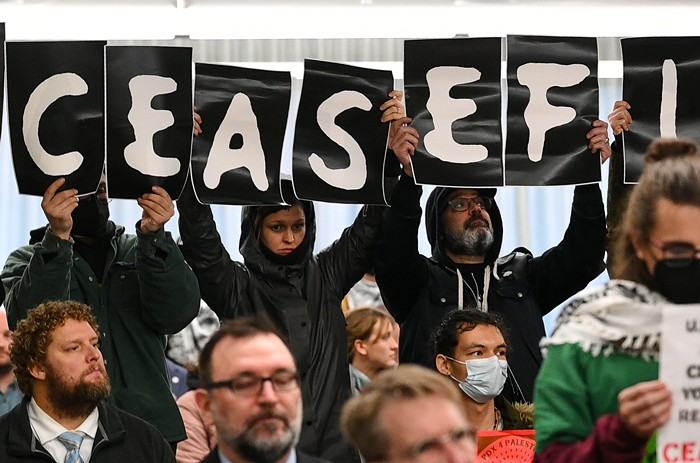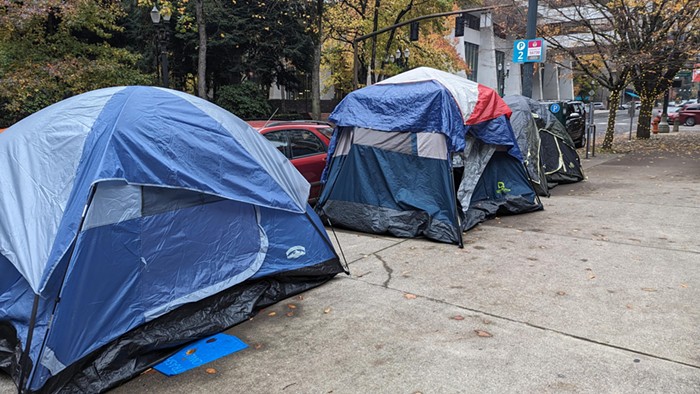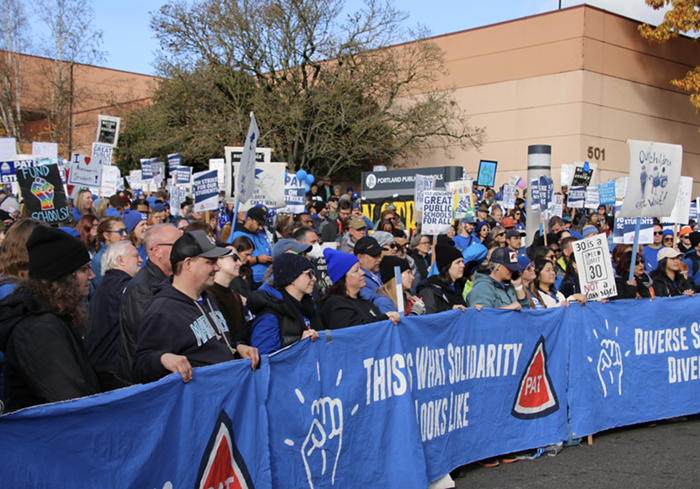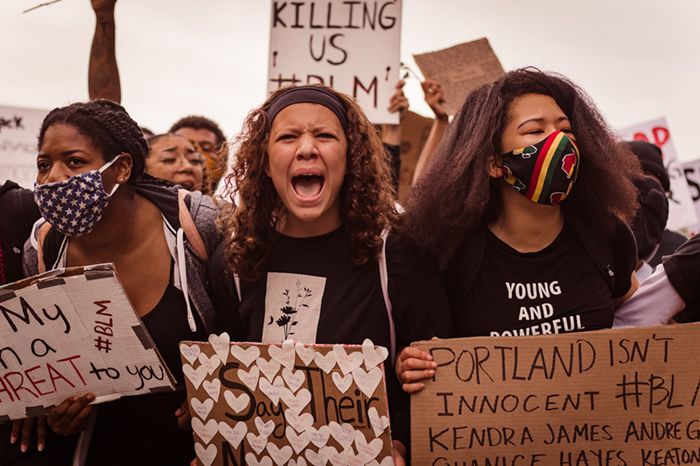
It's likely strict COVID-19 restrictions will remain in place for 21 Oregon counties—including Multnomah, Clackamas, and Washington counties—until the end of 2020.
Gov. Kate Brown announced this extension on what began as a two-week "freeze" on social and business activities across Oregon during a Wednesday press conference. She also released a new framework for determining restrictions based on a county's coronavirus risk level, and announced that Oregon is on track to receive COVID-19 vaccines to treat 30,000 people.
The new framework, which goes into effect on December 3, will lessen restrictions for at least 15 Oregon counties that aren't experiencing the kind of surge in COVID-19 seen in other regions.
For Multnomah County, which remains at "extreme risk," the framework generally means an extension of the restrictions Brown set into motion last week: Social gatherings limited to six people, gyms closed, indoor entertainment facilities shuttered, and required work from home (if possible). The new framework introduces two changes for "extreme risk" counties: Grocery stores are now limited to 50 percent capacity (currently, this number is 75 percent) and restaurants are allowed to open for outdoor dining (currently, all on-site dining is prohibited).
"If you need to go out, the option for limited outdoor seating is available," said state epidemiologist Dean Sidelinger. "But know that it doesn't come without risk. We assessed [that risk] versus the benefits to our emotional state, our mental health, and the economy."
In a separate release, Multnomah County officials instructed residents to stay home as much as possible "at least until Dec. 3"
"Essential outings are allowed for individuals to get food, medicines, care for others, or be outside at least 6 feet away from others," reads the county's statement.
Brown made a final plea during the press conference for Oregonians to limit large gatherings on Thanksgiving.
"One of the most difficult aspects of COVID-19 is that your choices impact others," said Brown. "By making sacrifices these holidays to protect our friends and families, we can make sure no one is missing when we gather around our dining room table next year."
Oregon has seen more than 1,000 new COVID-19 cases every day for the past week. On Wednesday, the Oregon Health Authority (OHA) announced a total 1,189 new cases, and 20 deaths. Currently, there are only 50 ICU beds available for Oregonians living in the region encompassing Multnomah, Clackamas, Washington, Columbia, Clatsop, and Tillamook counties.
Dr. David Zonies, the associate chief medical officer for Oregon Health & Science University (OHSU), spoke about what that looks like on the ground.
"We're already seeing hospitalizations rise at OHSU substantially over past three weeks," Zonies said.
He described how patients are dying in isolation, away from their friends and families, and those who survive suffer longterm impacts to their health. Zonies noted that some patients in the ICU with COVID-19 tell him they didn't believe it was a real disease, or didn't think it was going to be that bad. "Every time, without failure, they say 'I really wish I had taken it more seriously,'" he said.
"Please stay home for the holidays this year," Zonies said. "I want to ask for your sacrifice to make sure that we're able to provide the care for people that need it. Please hold out just a little longer...please be a patriot."
Unlike in past press conferences, state officials were able to offer a sliver of hope. Patrick Allen, director of the OHA, said the state is expecting to receive a shipment of COVID-19 vaccines for at least 30,000 Oregonians by the end of December. A better timeline of the vaccines' arrival will come into focus as soon as a COVID-19 vaccine is granted emergency use authorization by the US Food and Drug Administration. Drug manufacturer Pfizer (and its German partner BioNTech) is the only company that's submitted a vaccine for FDA authorization—but a similar vaccine created by Moderna isn't far behind.
Allen said the vaccines will be first distributed to frontline health care workers and those residing in long-term care facilities. The estimated 30,000 vaccines won't come close to covering these two populations—Oregon has at least 300,000 frontline medical workers alone. Allen said he's not certain how the first shipment of vaccines will be distributed between the groups.
"What I do know is that the amount of vaccines that will come out initially will not be as much as we like it to be," said Allen. "But, it appears that things are poised for that number to ramp up fairly rapidly, particularly if there are multiple vaccines to distribute."
OHA released a vaccine distribution plan earlier this month, which details how the rest of the expected COVID-19 vaccines will be fairly disbursed across Oregon.
"It will take some time," said Brown. "The good news is, there is some light at the end of the tunnel."



















